|
.. A moderate wind blew into Morien Bay. I rowed Naomi through the convoluted channel until we had sea room to unfurl the jib also. Once Naomi was clear of the sandbars and in deeper water, we anchored. |
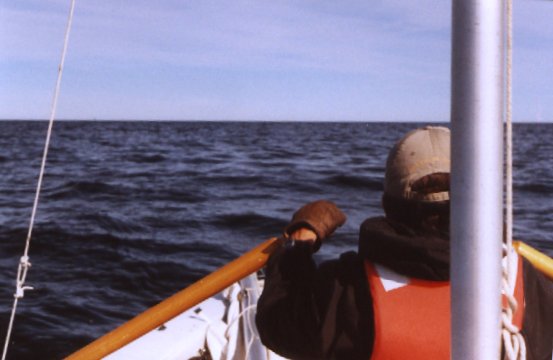 |
|
.. |
| Then
we
raised
the main and put the first reef in before
sailing. Our
beat
out of Morien Bay was constantly interrupted by pot
floats and we were
forced to either tack prematurely or bear off around
the lines.
The
wind began to lessen and we shook the reef out as we
rounded Cape
Morien.
Soon the wind was just a light breeze and we puttered
down the coast
assisted
by the one-knot tide. The sun was warm and Al
and I were pleased
to have this easy sail. The coastal region
around Scatarie Island
and Cape Breton is notorious for its bad
weather. .. 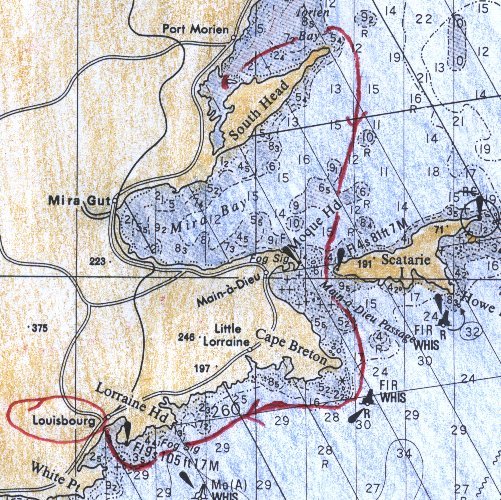 |
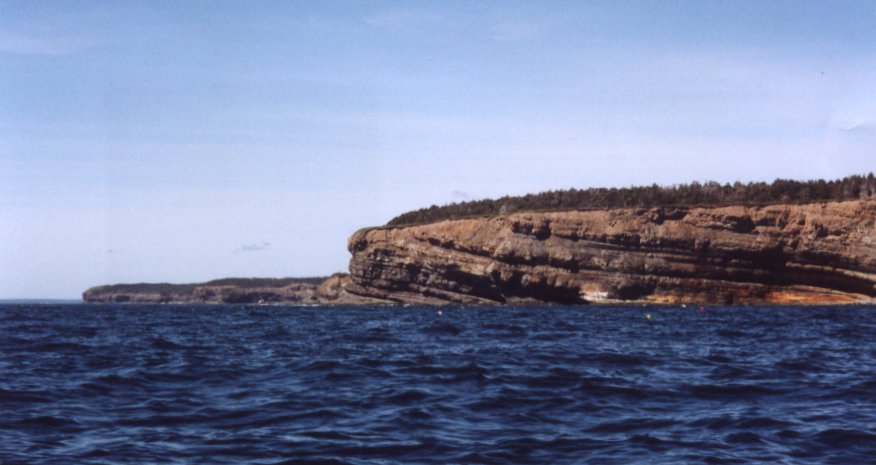 |
|
.. |
| Only Sable Island and St. Paulís Islands have had more shipwrecks than Scatarie Island on this coast. This large uninhabited island has no sheltering harbours and is exposed to the Atlantic Ocean swells. It is the meeting point for three major ocean currents. Tidal currents funnelling between the island and the coast can create dangerous overfalls and rip tides. Luckily for Allan and me, we drifted quietly through Main-ŗ-Dieu Passage on a sunny day with a following current and light breezes. Soon we passed close abeam to Porta Nova Rock. On a nearby outcrop, the French naval transport ďLe ChameauĒ was smashed during a gale in 1725. The 316 crew and passengers were lost as well as a treasure in silver and gold coins to pay the government in Quebec for the year. This fortune was recovered in the 1960s and is the largest hoard recovered in Nova Scotian waters. |
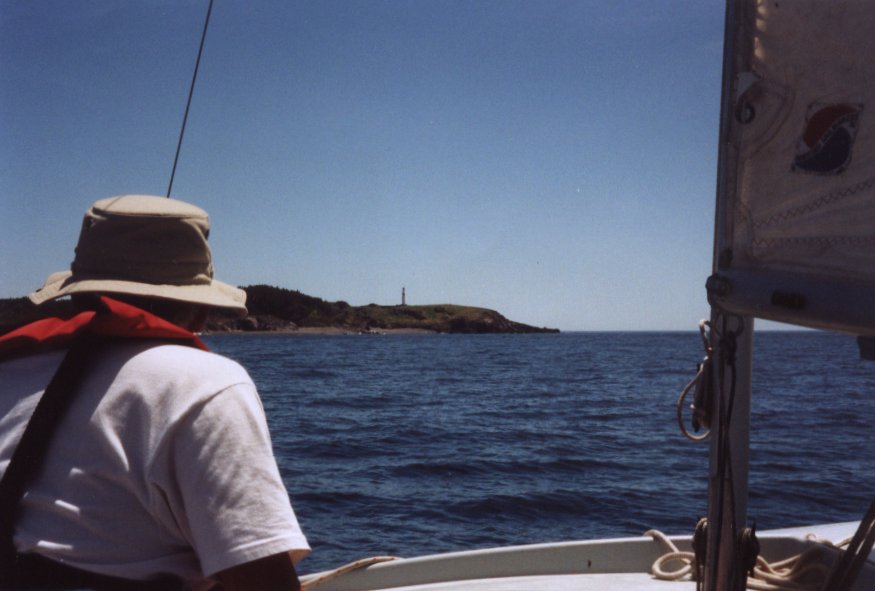 |
|
.. |
| After
rounding
Porta
Nova Rock, we were onto the southern coastline of Cape
Breton
Island.
An ocean sea breeze carried us a short distance before
dropping
away.
Rowing wasnít as easy here as the sea was lumpy and a
low swell set Naomi
towards the rock-bound shore. We saw and heard
more minke whales
and watched gannets circle and then dive headlong into
the sea to catch
fish.
As we rambled down the coast, Lighthouse Point came into view. The existing red and white lighthouse stands beside the foundation of the first lighthouse in Canada. It was built here by the French in 1734. |
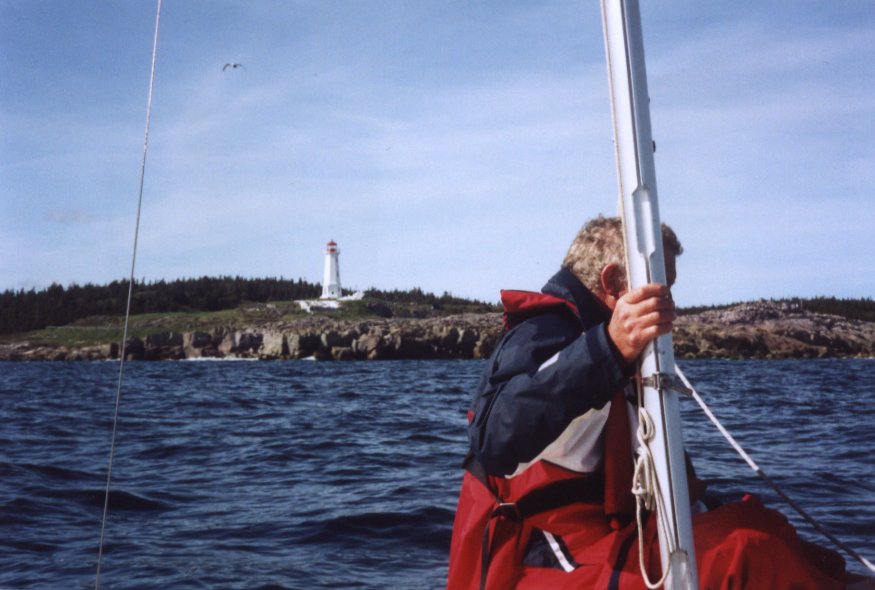 |
|
.. |
| Then the towers and elaborate gates of the fortress of Louisbourg came into view. The barren coastline was unchanged from the 1700s. Finally we rowed around the base of Lighthouse Point and headed for the wharves of the modern town of Louisbourg. We pitched our tents at a municipal campground beside the wharf. |
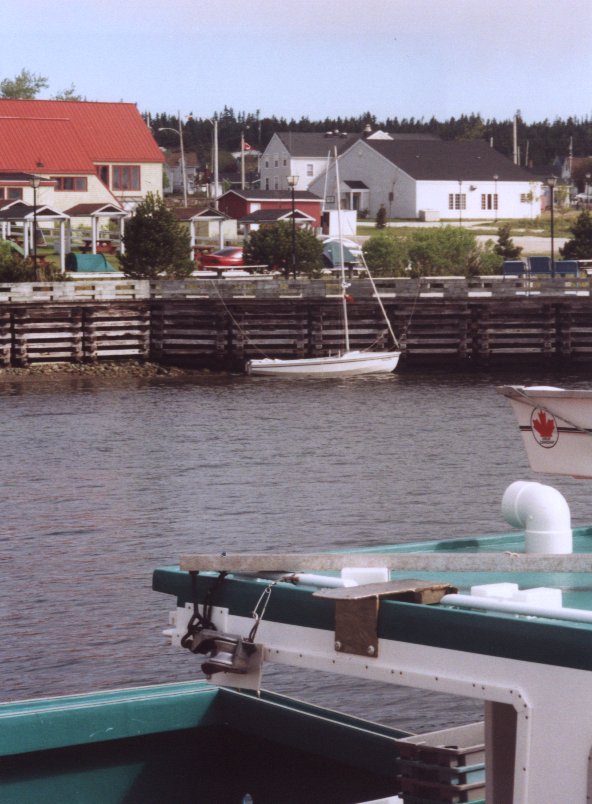 |
|
.. |
| Sunday--June
17 Allan had to be at Halifax airport by 2200 on Tuesday. The next 50 miles of coast was exposed to the ocean and there was no public transportation available and only remote ports to shelter in. Should we make a dash for St. Peters or end the cruise in Louisbourg? From our campsite we could take a small shuttle bus right to St. Peters and return with my van and boat trailer for Naomi. Even by dawn, a brisk force 4-5 wind blew out of the southwest. With a reefed main and beating into ocean swells, it would be futile to attempt a passage down the coast. The day was sunny though, and we chose to tour the fortress instead of sailing. As we arrived at the gate to the fortress, guards in period dress challenged the visitors. The group of tourists was small and the majority were French-Canadians from New Brunswick and Quebec. Allanís accent stood out from everyone else and the guards decided to torment the Englishman. When they suggested Allan was an English spy and should be locked up in the guardhouse for the day the French-Canadians nodded in agreement. Instinctively I nodded my head in approval also. Allan gave his most charming smile and said it was inconceivable he was an English spy. Both the French and English are in the EU and now they are a close-knit family. We toured the fortress for the day and returned to our tent sites for supper. |
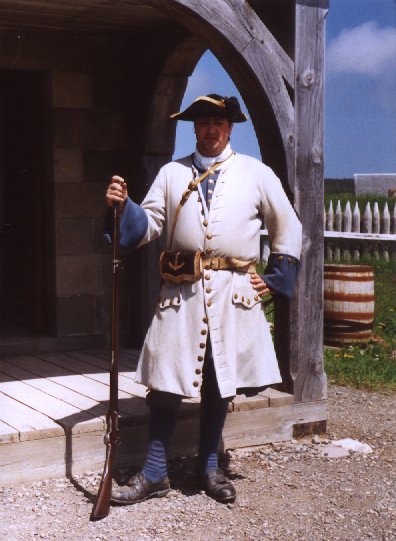 |
|
.. |
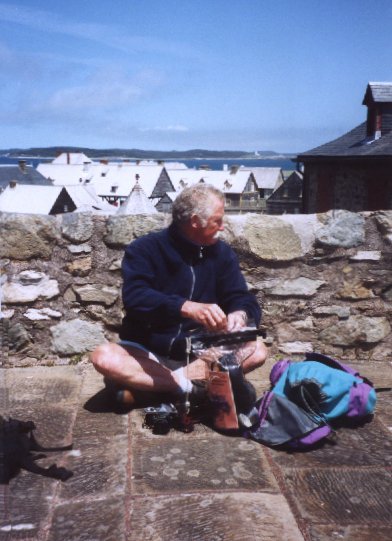 |
|
and troop concentrations to the War Office in London. .. |
| In
1713,
France
lost its possessions on mainland Nova Scotia and
Newfoundland to the
British.
The French administration moved to Isle Royale (Cape
Breton
Island.)
The harbour at Louisbourg was chosen as the location
to be the major
seaport
of the French on the East Coast. Quebec City and
Louisbourg were
the main strongholds of the French in North America.
During the 1700s
Louisbourg
became the fourth busiest port on the eastern seaboard
after New York,
Boston, and Philadelphia. By European standards
Louisbourg was a
typical fortified town but the elaborate defences made
it a fortress in
North American eyes. The French protected their
interests in the
banks fishery from here and it became a centre for
trade with Europe,
New
England, Quebec, and the West Indies. .. 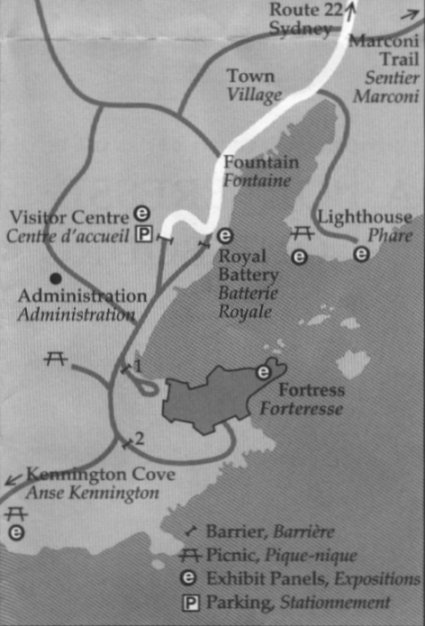 In 1744, Great Britain and France declared war on each other. In 1745, Louisbourg was attacked by 4,000 New England militiamen supported by the British Navy. The harbour was heavily defended by French artillery batteries so the troops landed in nearby Kennington Cove and assaulted the fortress from landward. Louisbourg surrendered 6 weeks later and the population was deported to France. Much to the disgust of the New Englanders, the fortress was returned to the French in 1748 as part of a treaty signed with the British. By 1758, the British and French were at war again. This time the British attacked Louisbourg with a force of 27,000 soldiers and sailors. Like the previous attack, the British didnít attempt to enter the harbour. They landed their troops near Kennington Cove also and laid siege to Louisbourg from the low surrounding hills and Lighthouse Point. Again Louisbourg fell and the population was expelled to France. This time the British engineers destroyed the fortress. One fifth of Louisbourg was restored to its original 1744 state in the 1960s. Whenever I have visited the fortress, Iíve found myself standing on the ramparts looking seaward. I tried to visualize the fortress, light tower, and the harbour approaches as the sailors and passengers would have seen it after their gruelling two-month passage from France. |
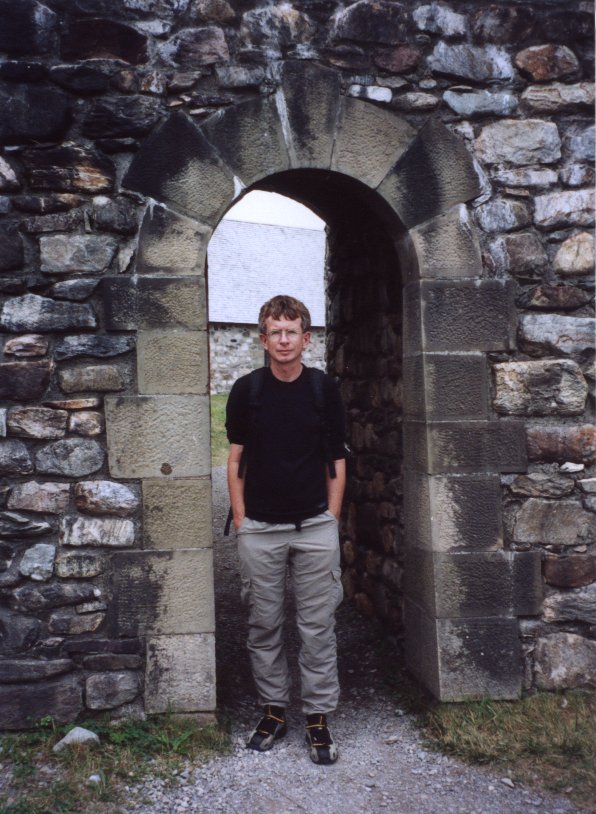 |
|
.. |
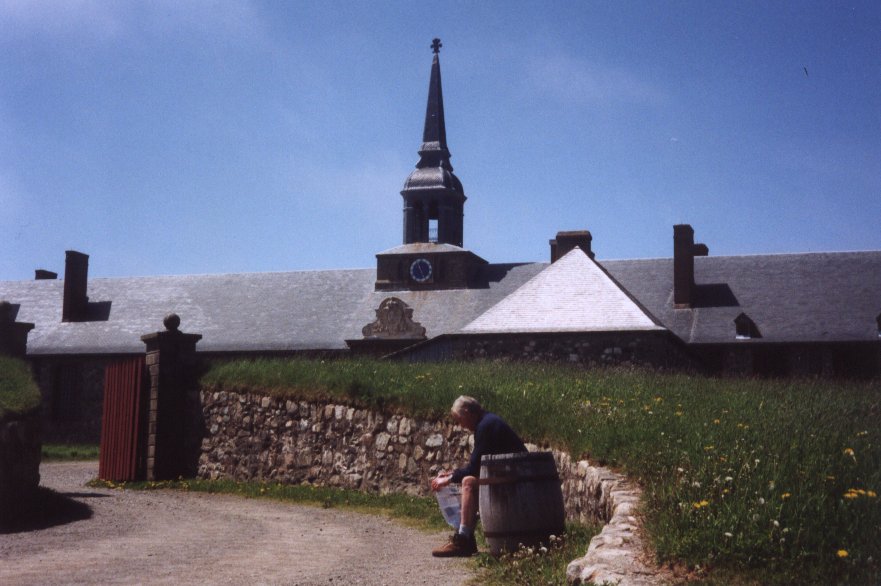 |
|
.. |
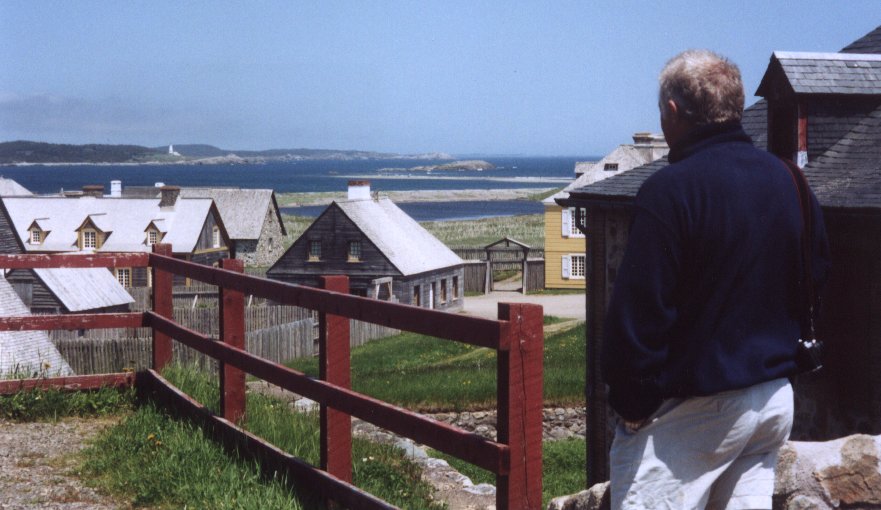 |
|
.. |
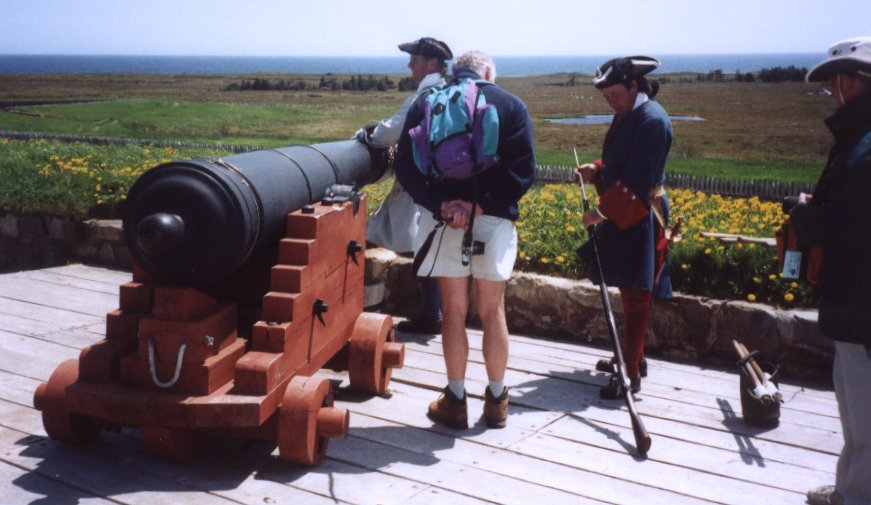 |
|
.. |
| Mondayís forecast called for southwesterly winds and poor visibility in fog. Continuing on down the coast was out of the question. Our cruise ended in Louisbourg. |